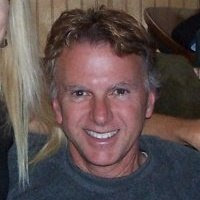
Susan G. Komen Tri-Cities Race For The Cure
Survivor Story – Betty Jeter and Sarah Jenkins
By Hank Brown
On Sunday, October 25th in Kingsport, TN Betty Jeter will put on her pink survivor shirt and walk proudly in the Susan G. Komen Tri-Cities Race For The Cure. She’s not ashamed to let people know she is a 14-year survivor of breast cancer, but that was not always the case.
“When I had the surgery, I didn’t want people to know I had cancer,” said Betty. “I didn’t want the attention. I remember when we first did the survivor celebration a few years ago, Sarah (her daughter Sarah Jenkins) wanted me to go. It was hard for me to put the survivor shirt on.”
“Women today are more in tune with their bodies,” continued Betty, who spends her days now keeping up with her two grandchildren. “I see articles about women going to the beach and bearing their chest. Oh my gosh, I would love to do that. It would be so liberating, but the way I was raised, we just didn’t do that. We want to keep it quiet.”
Sarah, a 33-year old clinical trials study coordinator at Johnson City Medical Center, agreed with her mother. “A lot of women won’t go to the survivor celebration. There’s a generation where it’s a private thing. They just don’t want people to know.”
Sarah, a self-proclaimed “volunteer queen,” is now the Assistant Race Chair and Director of Race Operations for the Tri-Cities Race For The Cure. She got her start as a Komen volunteer when she was just a freshman at the University of Tennessee.
“When I was pledging sororities I chose Zeta Tau Alpha because their philanthropy is the Susan G. Komen Race in Knoxville,” said Sarah. “At that time, I did it for my grandmother who got breast cancer a couple of years before Mom did.”
“I’m very proud of her,” Betty said looking over at Sarah. “She does this for my mom and for me. She puts in a lot of time as do all the volunteers. I’m always amazed when I show up at the race all the men there wearing pink shirts.”
Betty is a big proponent of self-examination. She had been having trouble with “bumps and lumps” since she was 21 years old, and went to the doctor every few months for regular checkups, sometimes removing suspicious areas. In July, 1995, at age 49, she found another small lump and immediately went for an exam. The doctor found nothing, and told her she should be fine. Betty asked him if he was sure, and he knew she had found something he hadn’t. So, he requested a mammogram and biopsy just to be safe.
“The lump was a little higher and deeper than normal,” said Betty. “That’s why it was hard to detect. When it came back as cancer, I cried uncontrollably in the doctor’s office. They sent me straight to the hospital for pre-op, and I cried there too.”
Sarah was home from school on summer break when her mom got the news, so along with her sister, her aunts and her uncle, they all pitched in to help.
“They took good care of me,” Betty said. “They cooked, they cleaned. They were all very supportive. But I was glad when school started back. They kind of hovered over me,” she said with a laugh.
“We learned it from you!” Sarah countered, smiling.
Betty and Sarah both agreed that “Aunt Lou” (Betty’s sister) stood out among the support crew. “She was right there with me the entire time,” said Betty. “I remember when they took the bandages off after the surgery, I cried and she cried with me. But you know, that was a good thing. She didn’t tell me, ‘oh, you’re just fine.’ I needed someone to cry with me.”
“When it was time for me to leave the hospital, I was afraid. I knew when I walked out of the hospital I was walking out a different woman than when I walked in. But it’s the first step to being a survivor.”
“It’s like putting on that pink survivor shirt for the first time. When I wear that shirt I’m saying I’m here and I’m a survivor.”


